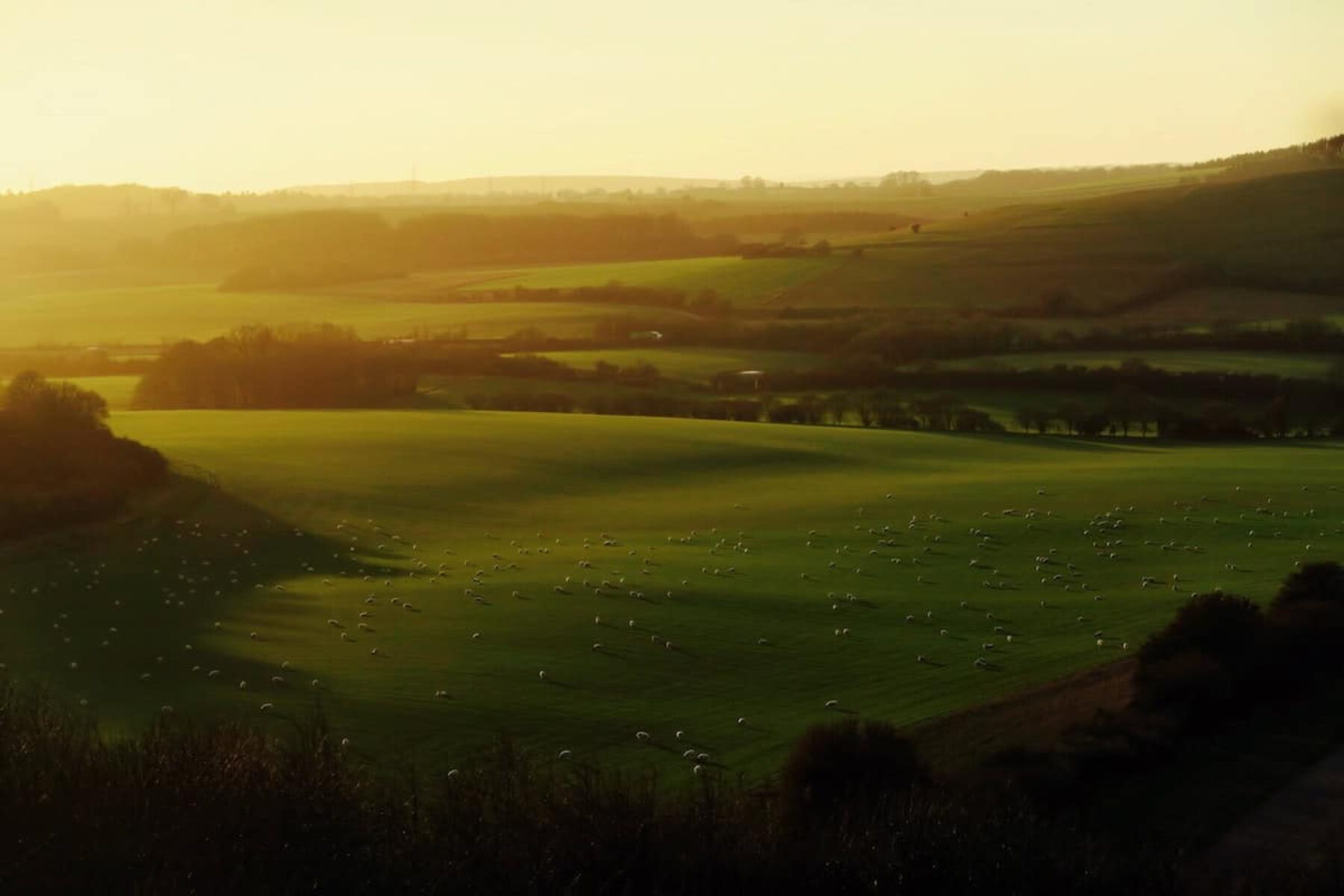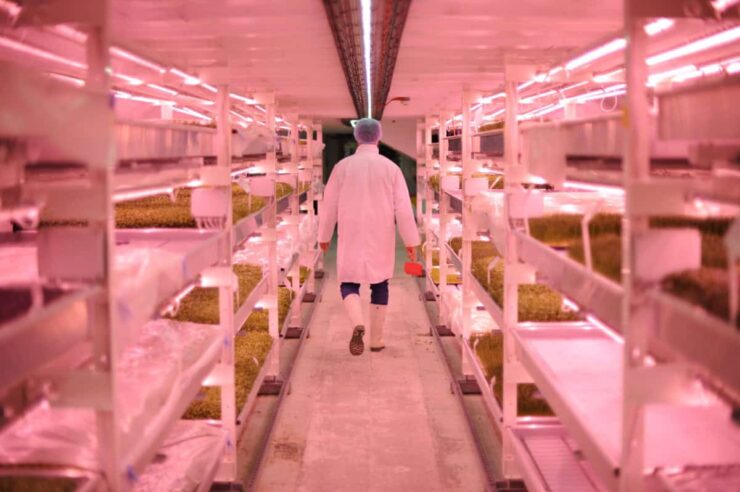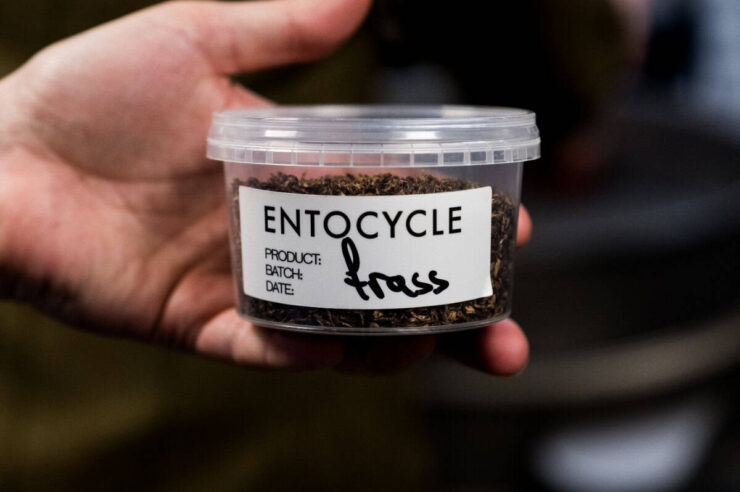Agriculture typically accounts for 10 per cent of the UK’s emissions. But some farmers are taking a radical new approach – one that boosts biodiversity, captures carbon and improves animal welfare
Fred Price hadn’t been running his family’s Somerset farm for long before he felt the nagging frustrations that face many farmers in the UK. He’d taken over the 250-acre arable farm when he was just 21 years old, full of youthful enthusiasm for chasing yield and making his fields as productive as possible.
“Because we were producing commodity crops – wheat, barley, oilseed rape – we had no control over the price so we needed to bring down our cost of production per tonne by growing more of it,” Price explains.
But there was a snag. Getting more out of each harvest meant putting more into the system at the beginning: more fertiliser, more pesticides, more herbicides, more fungicide.
“The kind of inputs that modern cereals and industrial agriculture require also have side effects, and the side effects are suppressing natural cycles and soil biology. That’s why we were having to use more and more just to stand still,” he says.
Fast forward ten years, and it’s a different story. Gothelney Farm is now a mélange of cereals and green fields of grass and herbs. Pigs are snuffling about on the pasture. “After a few years of chasing yield, I started unpicking it and asking, ‘what’s actually going on? What are those natural cycles and can we farm for those?’ Once you nudge that door open, it’s addictive,” he says.
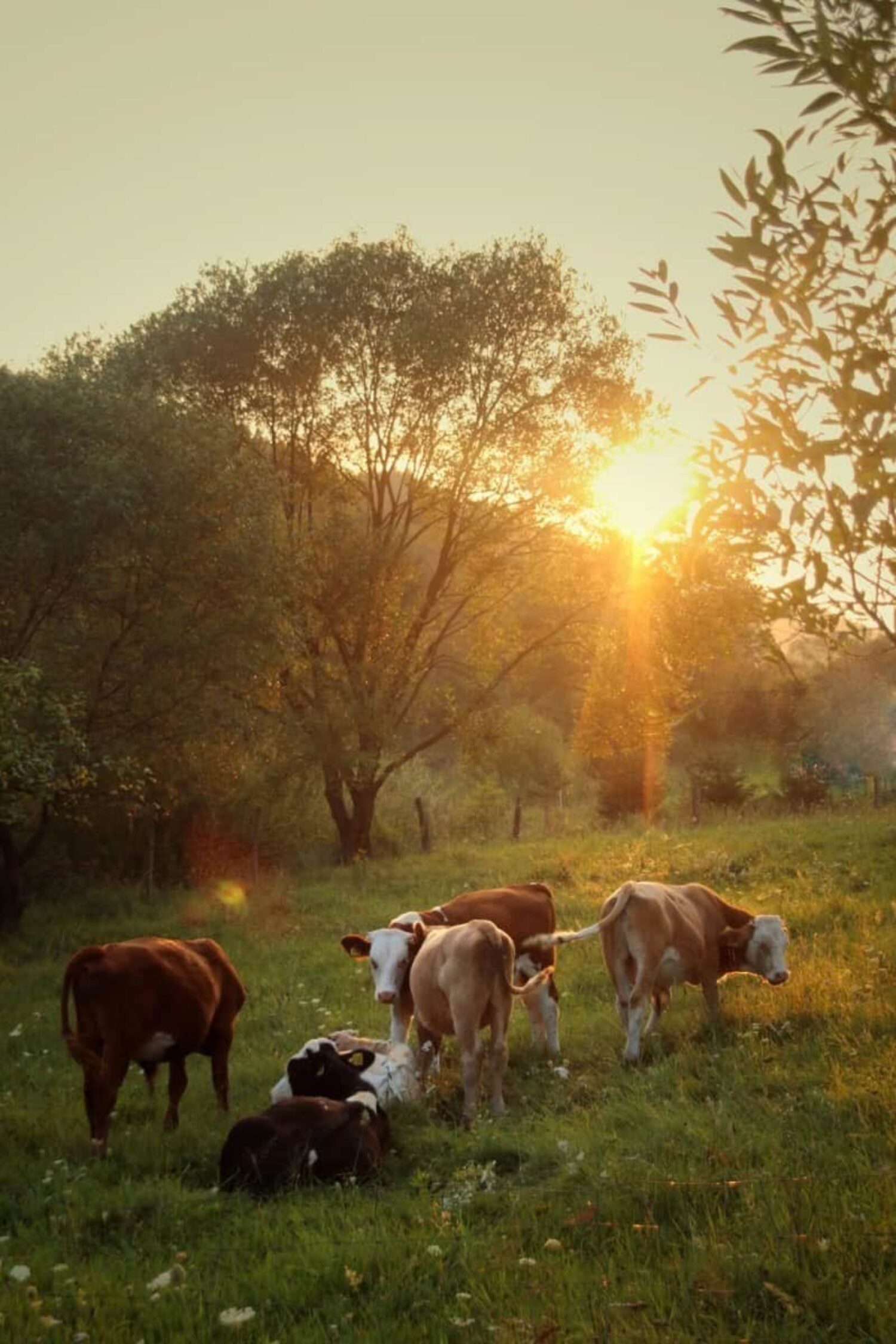
Pasture-fed livestock help to improve soil health. Image: Iga Palacz
Price is part of a growing wave of farmers who are swapping conventional, chemical-heavy farming practices for regenerative agriculture: a system of farming that prioritises soil health, helping to boost biodiversity as well as sequester carbon back into the ground.
If Price’s experience is not yet familiar to other UK farmers, it could be soon. The new agriculture bill, currently going through parliament, pledges to reward farmers for environmental benefits, such as improved air and water quality, higher animal welfare standards or measures to reduce flooding.
“Until about two years ago, the UK was not really on the bandwagon [of regenerative agriculture],” says Abby Rose, who is part of the team that produces the Farmerama podcast and a co-founder of Vidacycle, which uses tech to support small-scale farmers. “But since the idea of public money for public goods came in as the alternative option for farmers getting paid their subsidies, it’s completely turned around.
“It’s quite a radical moment, I would say, in the UK farming community today. And it’s really exciting. Many farmers are asking, ‘How is my business going to go forward?’ and the answer in many people’s minds is: I have to be building soil health. That is the root of regenerative agriculture.”
Unlike, say, organic or biodynamic farming, regenerative agriculture doesn’t have a hard definition or a set of standards that need to be met. Farmers might adopt various techniques that help enhance or maintain soil ecology. Under the “no till” approach, for instance, farmers no longer plough their fields, to prevent disturbing the topsoil.
Cereal crops are rotated and replaced with grasses and herbs to allow the soil to sequester carbon and build organic matter. Plant varieties are chosen for their ability to restore different nutrients. Farmers often refer to it as a “journey”.
“It’s constantly evolving” explains Price. “It’s the language of the soil: you look, you listen, and you make a management change as a result.”
Switching from conventional farming methods to regenerative ones have made for a much more positive existence, he says. Previously, his interventions would have been negative: kill this weed or that pest. Whereas now, he manages the system to encourage the things he does want: invertebrates that naturally eat crop-hungry weevils, say, or legumes that help draw nitrogen to the soil in place of an artificial fertiliser. It’s like trying to solve a constantly moving puzzle.
There’s another key component to building healthy soil on farms, and it’s one that might seem to go against the conventional wisdom about what makes a planet-friendly diet: livestock. If farmers want things to change the fastest, there’s one animal that does the job best, according to Rose.
Cows. Keeping a flock of friendly resident herbivores on the land gives farmers, as Rose puts it, “a natural walking fertiliser system”. They stomp through, munch down the pasture, encouraging the grass or clover to grow back and sequester more carbon into the soil, then leave nutrient-dense piles of fertiliser behind for a host of micro-organisms to feast on.
“We look around and see the benefit that livestock farming brings to the countryside,” says Francis Clarke, who runs Trewithen Dairy in Cornwall.
Clarke’s family had been dairy farmers for generations, though in 2001, his father decided to sell their herd and concentrate solely on running the dairy operation, which sells milk and cream from the herds of around 30 farms based within 25 miles.
“The more you learn, the more you realise that our farmers aren’t farmers of livestock – they’re farmers of the land, they’re farmers of soil and everything stems from that,” he says.
An irony of the regenerative agriculture movement is that many farmers, as part of a move towards environmentally beneficial systems, start farming animals where they never had them before.
Price, who previously farmed only cereal crops, introduced pigs. “The leys and cover crops – which our system depends on, if we’re going to be farming without [chemical] inputs like we want to – how do we pay for those? We pay for them with livestock,” he explains.
The pigs feed on barley and beans grown on the farm, as well as pasture that’s restoring the soil. The herbs in the ley are chosen partly for their nutritional value to the pigs.
Of course, farming livestock is only a boon to the environment so long as the animals are fed on the pasture of the farm, not supplemented with soy-based feeds. “The reality is a large number [of farmed animals] are still fed soy, even though they’re on grass as well – and that is a problem,” Rose points out.
It’s the language of the soil: you look, you listen, and you make a management change as a result
To those who disagree with the ethics of farming and eating animals at all, Price argues that in some ways his position is not so different from theirs. “If your reasons for being vegan are really about trying to understand where your food comes from and the implications that what you eat has on the environment in which it’s grown, I have so much in common with them,” he says.
“The reason our farm looks like it does is because we’ve really thought about the potential negative aspects of our food production system.”
Tom Martin runs his family farm in Haddon, near Peterborough, and is, he says, an “enthusiastic practitioner” of regenerative farming. Despite being right at the beginning of the journey, he’s already seeing rewards – higher numbers of earthworms and improved drainage, which is another characteristic of healthy soil and essential in such a wet winter.
“Farmers are the decision makers of our planet,” says Rose, “They are the people who interact with our land most. If they decide, business wise, they need to cut down trees, they’re going to cut down trees, which could cause flooding in a nearby town.
“We all need to care about the day-to-day decisions farmers are making, because they affect us all.”
For Martin, the benefits of being more regenerative are not only environmental. “It’s taken a lot of cost out of the business,” he explains. Now, he doesn’t till his field at all, which has slashed his fuel bill and the time it takes to lay a crop. “It takes us now about 17 minutes per hectare to establish a crop of wheat, whereas it used to take over an hour.”
Rose agrees that a regenerative approach can help farmers balance the books. By cutting back on costly agro-chemicals and big ticket, diesel-powered equipment “you’re literally just spending less”, she says.
Mark Drewell, co-founder of the forthcoming Centre for Regenerative Agriculture, estimates that switching to these practices could cut farmers’ overheads by 20 per cent.
It’s not without risk, however: if farmers end up with less crop at the end of the harvest, that’s less money to run the farm and feed their family for the following year. Martin says his cereal yields have remained constant since he’s switched.
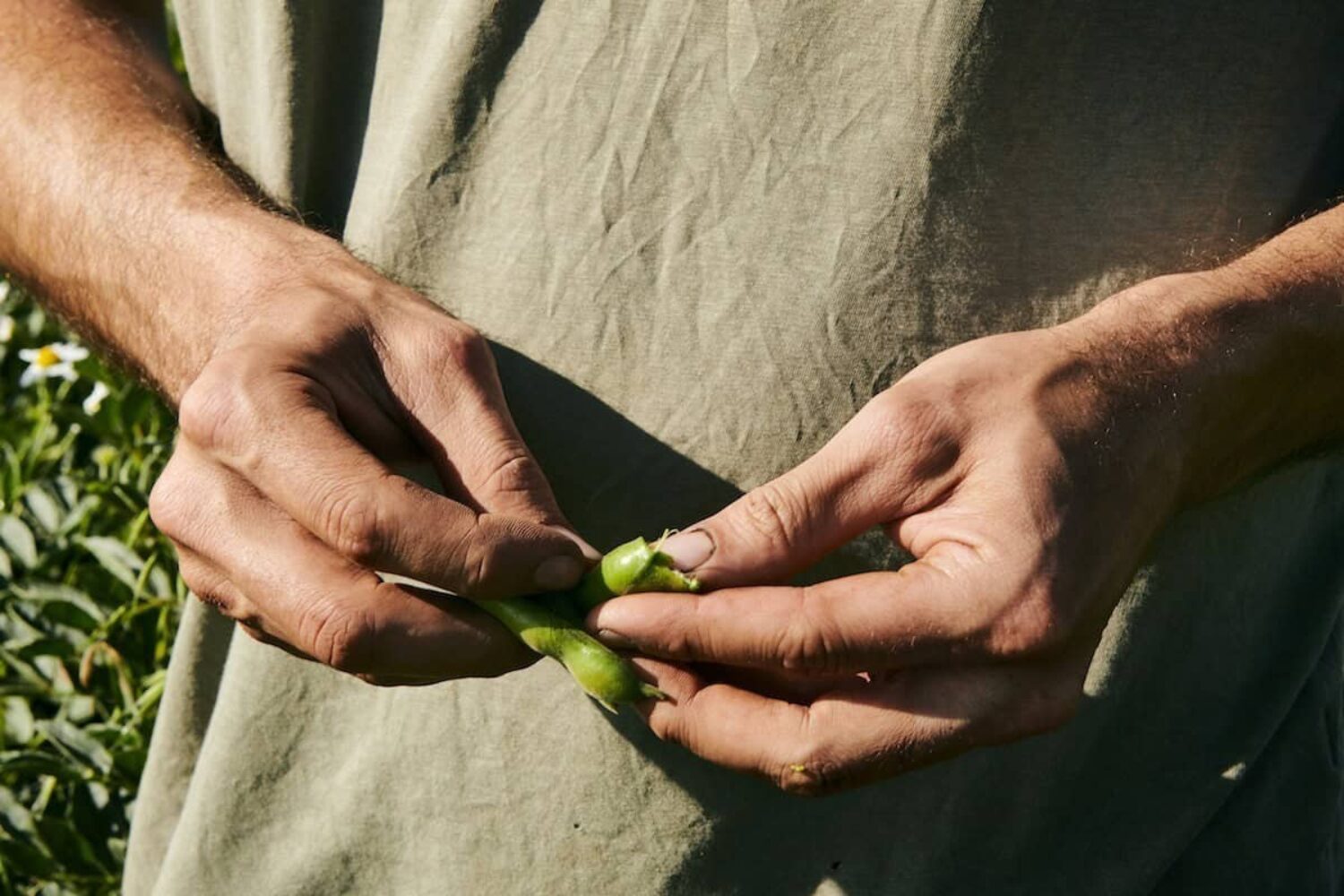
Legumes on Gothelney Farm. Image: Scott Grummett for Farms to Feed Us
“It’s a difficult one to call,” says Amy Mason, a researcher in agro-ecology who works with farmers to improve soil health. “There are definitely some studies out there now which show that regenerative practices can have higher yields.”
Mason says that focusing exclusively on crop yield is missing the point. “What we need to focus on more, I think, is resilience of crops and mixed systems,” she says. “I think that’s going to be a more important metric to measure how successful farms are.”
Diverse and resilient crops have been key to Price’s farm since he switched. Instead of using modern wheat species, he’s testing forgotten, heritage varieties that were farmed hundreds of years ago when no artificial fertilisers or weed killers existed. “They’re a forgotten genetic tool box that aren’t part of the modern genome,” he says.
Planting a mixture of grain varieties means the whole field is better able to withstand pressures from weather, pests and disease, he says.
“This is why the regenerative agriculture movement has had such traction: it’s not just a nice story that people can get behind because of climate change. These are natural systems – the soil food web or insect predators managing other insects in neat cycles,” he says. “If you get it right, nature rewards you.”
Farmers get a bad name in environmental circles. Globally, agriculture is one of the chief emitters of greenhouse gases. In the UK, intensive farming of arable crops since the mid-20th century has led to major biodiversity loss.
Farmland birds in the UK declined by 56 per cent between 1970 and 2015 – more than birds in any other habitat. Some species of butterfly (known as habitat specialists) have decreased by two thirds since 1976. In the last 100 years, the country has lost 97 per cent of its wildflower meadows.
“For the last 50 years, [it’s been] a choice between doing something that is valuable to nature or something that grows food and makes money,” says Drewell. He claims that’s no longer the case.
“Farmers get a bad reputation in this debate. People say farmers don’t care – that’s not my experience at all. Even conventional farmers I’ve met care deeply about the land they’re on. They just feel like they do what they need to do,” says Mason.
Farmers are the decision makers of our planet. They are the people who interact with our land most
Encouraging farmers to switch is a big ask. “In a traditional farming environment: you don’t have the knowledge [of regenerative methods], you’re surrounded by a cultural and business system that is very well established and there aren’t a lot of incentives for that to change,” says Drewell.
There is another challenge, lurking in the not-too-distant future: the UN estimates the global population will hit 9.8 billion by 2050. The population of the UK by that point is predicted to be 77 million. Will regenerative agriculture be productive enough to feed all those mouths?
Price argues that it’s our food systems that are the problem. An estimated 70 per cent of the world’s food is grown by small- scale family-run farms. “Our supply chains and our value chains in the UK and Europe aren’t equipped to deal with small-scale production,” he says. “[But] it’s a myth that this kind of farming can’t feed the world.”
Along with switching to regenerative methods, Price extracted himself from the traditional cereal supply chains, too. Instead of selling his wheat to commodity markets, now he works with mills and bakeries in the southwest. (Wastage from the milling process goes back into the pig’s feed).
Independent butchers, charcutières and restaurants buy his pigs. He knows all his customers by name. “It’s a very efficient system, because we’re all connected and talking and working together,” he says.
It’s a nice metaphor for what’s going on below the surface of his farm, too. “It used to be: you had ecology and you had farming. Now I very much see the two talking to each other,” he says. “When I see a bird I understand the whole chain of events that led to that bird being there and I know it is symptomatic of everything being right.”
Main image: George Hiles
